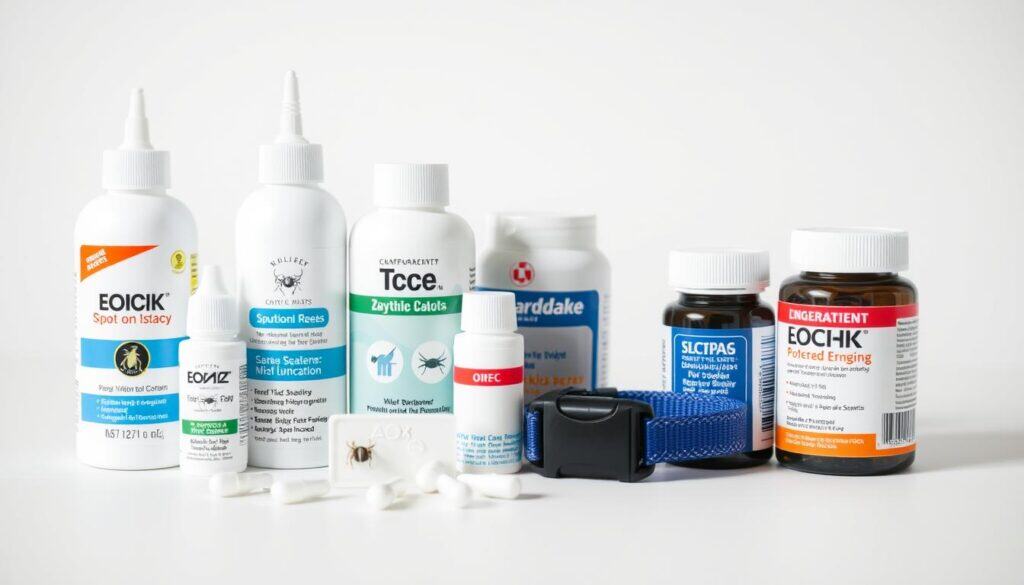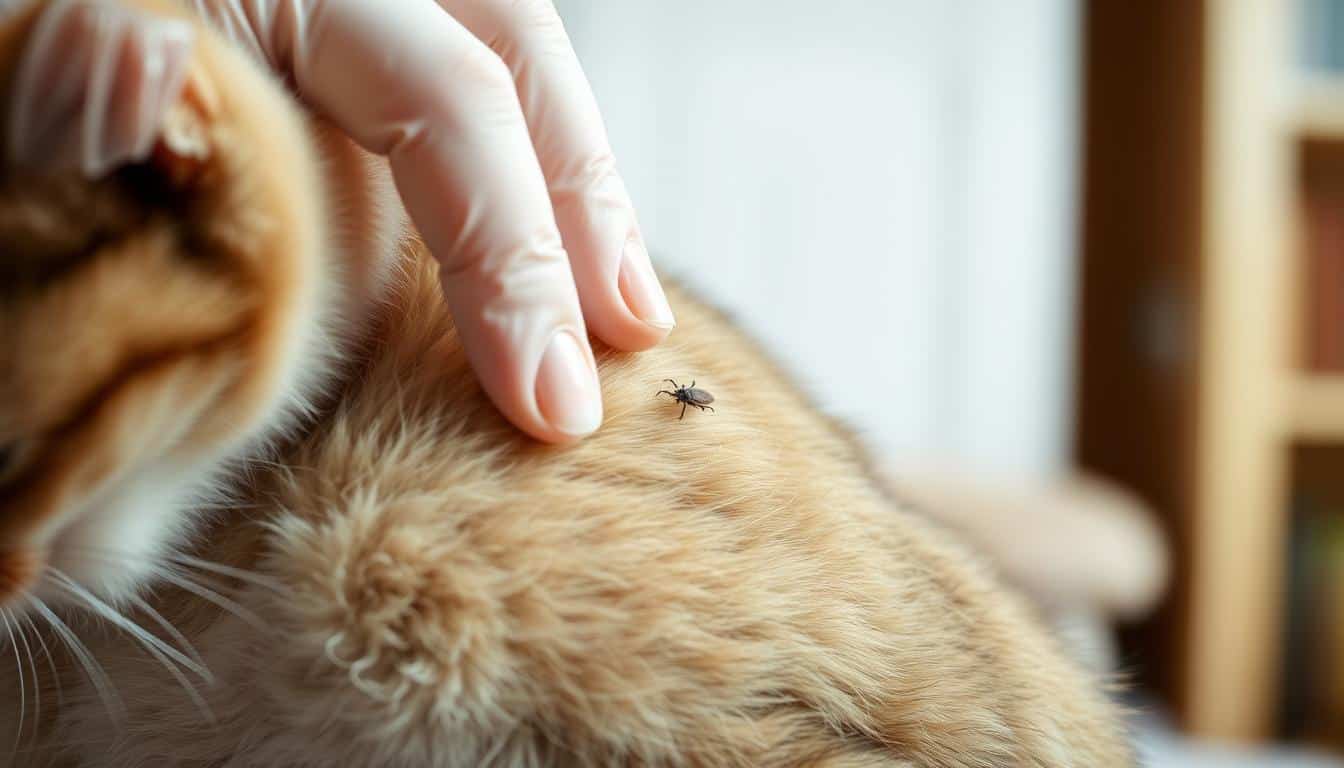Ticks pose a serious threat to feline health, carrying diseases like Lyme disease and cytauxzoonosis. Quick removal is critical to reduce infection risks, as these parasites can transmit illnesses within 48 hours of attachment.
Even indoor pets aren’t safe—ticks can hitch rides on humans or other animals. The CDC emphasizes prevention and prompt treatment to protect cats from these dangers.
Veterinary guidance is essential, especially if a pet shows signs of tick-bite paralysis. Owners should also avoid toxic solutions like tick collars containing Amitraz, which the ASPCA warns against.
1. Instant Tick-Killing Treatments for Cats

Fast-acting solutions are crucial when dealing with tick infestations on felines. Vet-approved treatments target parasites quickly, reducing disease risks. Options range from topical applications to sprays, each with unique benefits.
Spot-on Treatments
Spot-on treatments like Frontline Plus use fipronil to eliminate ticks within hours. Applied monthly between the shoulder blades, they offer lasting protection. Never use dog-specific products on cats without veterinary guidance.
Medicated Shampoos
Pyrethrin-based shampoos kill ticks on contact during baths. Ideal for tolerant cats, though effects fade faster than spot-on solutions. Use biweekly for consistent control.
Tick Sprays
Adams Flea & Tick Spray provides immediate knockdown for outdoor pets. Avoid spraying near the face and follow label instructions. A practical choice for active cats in wooded areas.
For households with children, spot-on treatments are safer—they leave no pesticide residue on furniture. Always consult a vet to choose the best way for your pet’s needs.
2. Home Remedies to Eliminate Ticks Quickly
Many pet owners seek safe home remedies for tick control. While these natural solutions may help, they often lack the speed and reliability of vet-approved treatments. Always prioritize feline safety—some methods pose hidden risks.
Essential Oils (Caution Advised)
Diluted lavender or eucalyptus oils might repel ticks, but use extreme care. Cats metabolize oils differently, and tea tree oil is toxic, warns the ASPCA. Even mild oils can cause lethargy or vomiting if overused.
Apply sparingly to a collar—never directly on fur. Consult a vet before trying any essential oils to avoid adverse reactions.
Diatomaceous Earth
Food-grade diatomaceous earth (DE) dehydrates ticks in bedding or carpets. Sprinkle lightly in problem areas, then vacuum after 12 hours. Reapply weekly during peak seasons.
Note: Wear a mask during application—DE particles can irritate lungs. Avoid direct contact with pets’ faces.
“Home remedies should complement, not replace, professional treatments for full protection.”
Other methods like citrus peels or rosemary sprays lack scientific backing. Even tick-eating chickens won’t solve indoor infestations. For reliable control, pair these methods with vet-recommended products.
3. Vet-Approved Solutions for Tick Removal
Veterinarians recommend specific treatments for effective tick removal in felines. These prescription and over-the-counter products balance speed with safety, ensuring prevention without harming your pet.
Oral Medications
Bravecto (fluralaner) provides 12-week protection with a single dose. Though off-label for cats, some vets prescribe it with careful dosing. Always consult a professional—oral meds require precise weight calculation.
Tick Collars
Seresto collars release flumethrin and imidacloprid for up to 8 months. Proper fit is critical:
- Leave space for two fingers under the collar.
- Trim excess length to prevent chewing.
Avoid generic brands—some contain unsafe pesticides.
Prescription-Grade Powders
Vet-Kem powders target ticks hiding between toes or in dense fur. Apply lightly to avoid inhalation. For kittens under four months, skip dips—their sensitive skin absorbs chemicals too easily.
“Revolution Plus combines selamectin and sarolaner for dual-action defense against ticks and fleas.”
These tick treatments offer the best way to protect pets long-term. Regular vet check-ups ensure proper application and monitor for adverse reactions.
4. Keeping Your Cat Tick-Free for Good
Long-term tick prevention combines home care with professional treatments. Start by trimming lawns and treating outdoor areas with pet-safe sprays. This disrupts tick habitats before they reach your pets.
Daily checks with a fine-toothed comb help spot parasites early. Focus on ears, toes, and neck—common hiding spots. For multi-pet households, use vet-approved treatments like NexGard to break the life cycle.
Indoors, wash bedding weekly in hot water and vacuum carpets. Enclosed “catios” let cats explore safely during peak tick seasons. Annual vet exams catch diseases like anaplasmosis before symptoms appear.
The best way to control ticks? Consistency. Pair these steps with vet guidance for complete protection.





